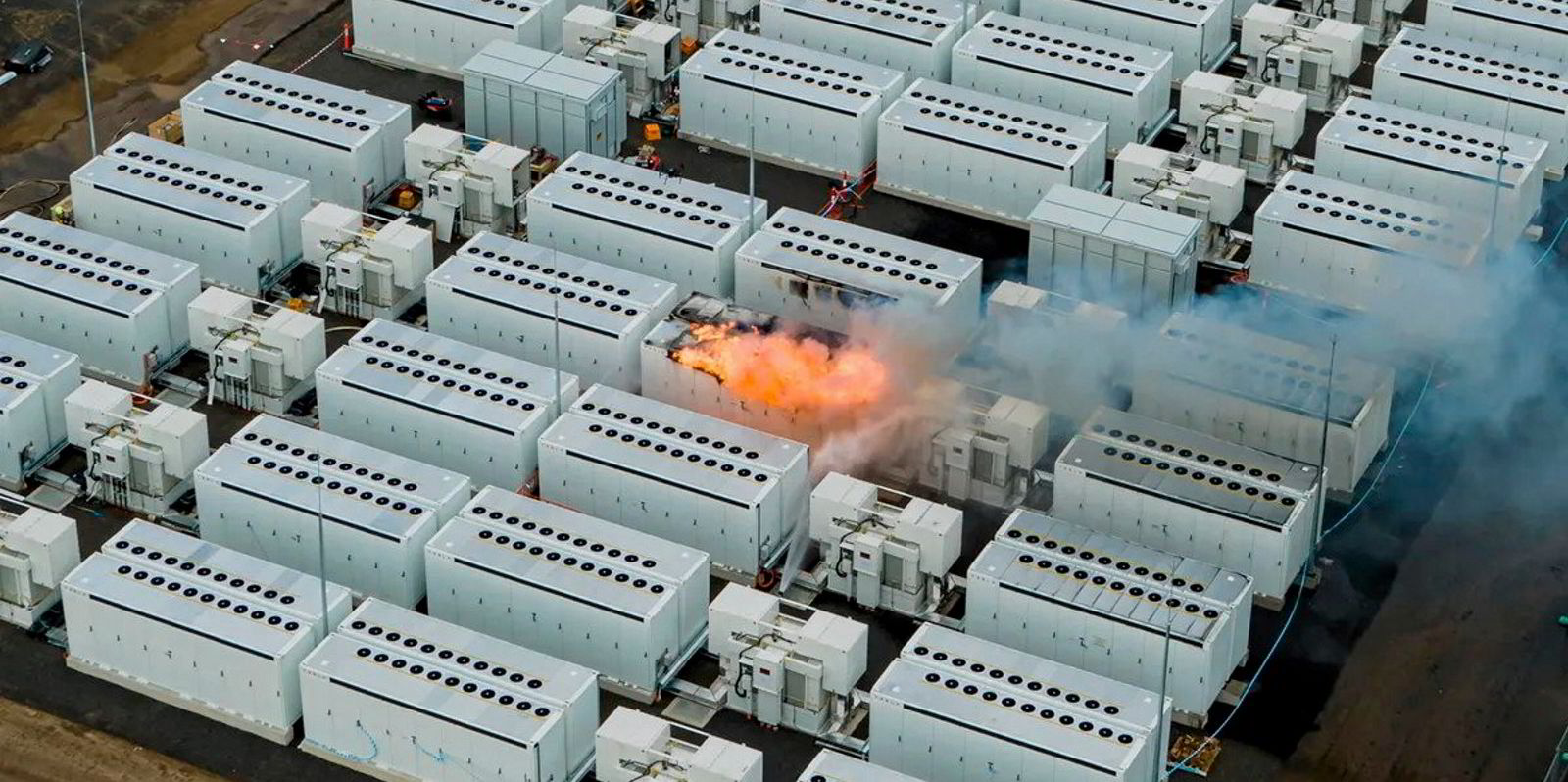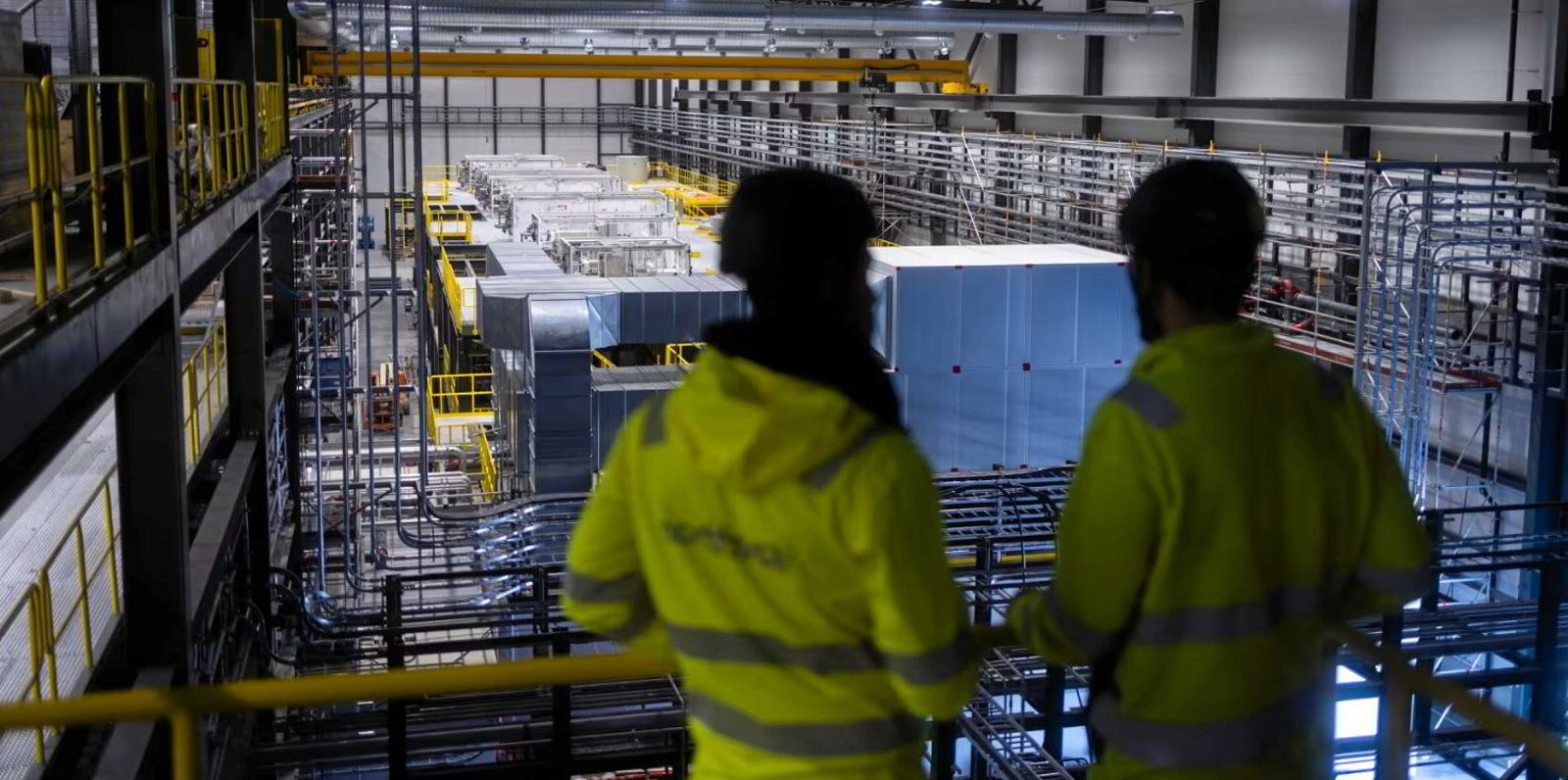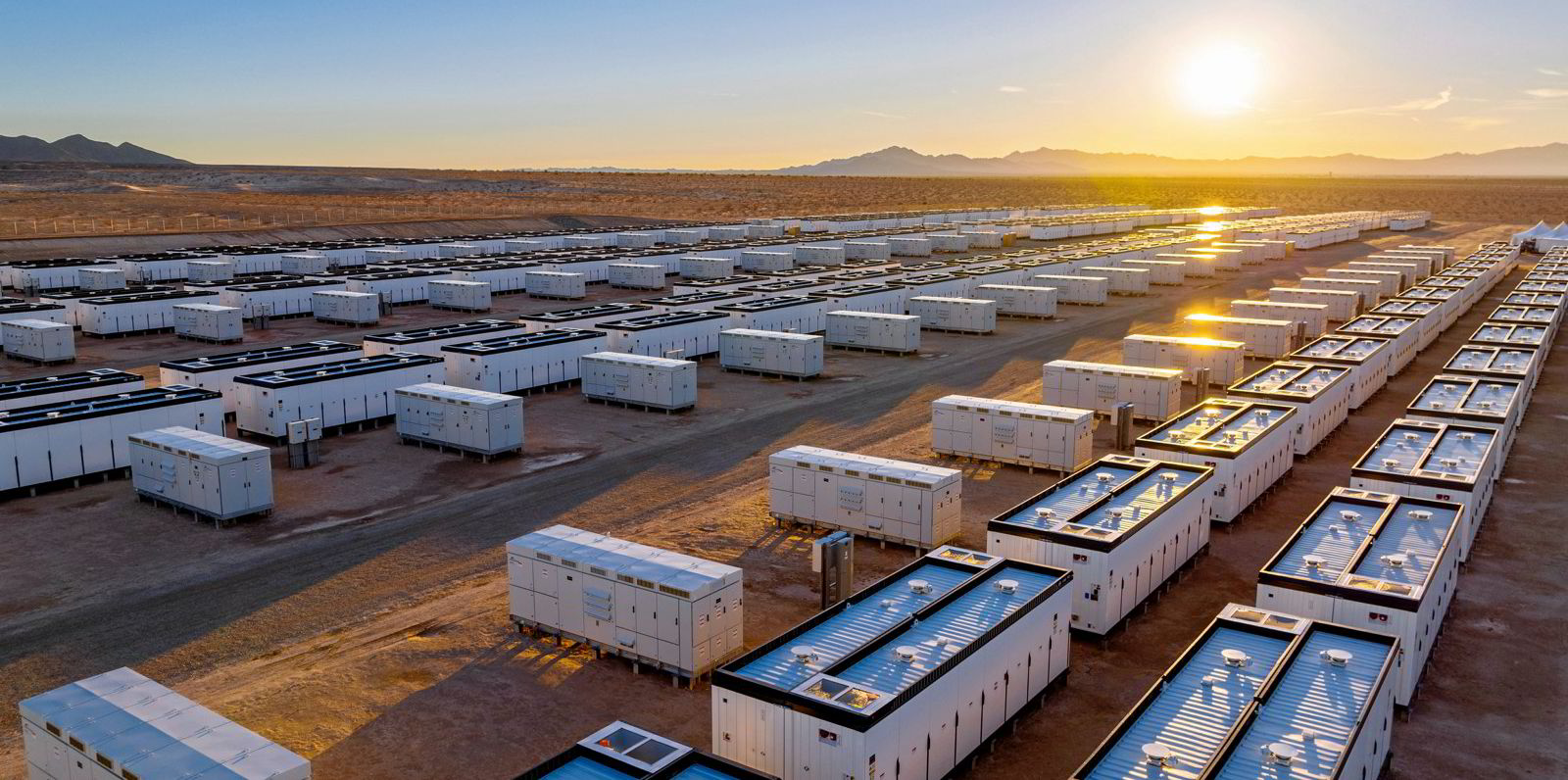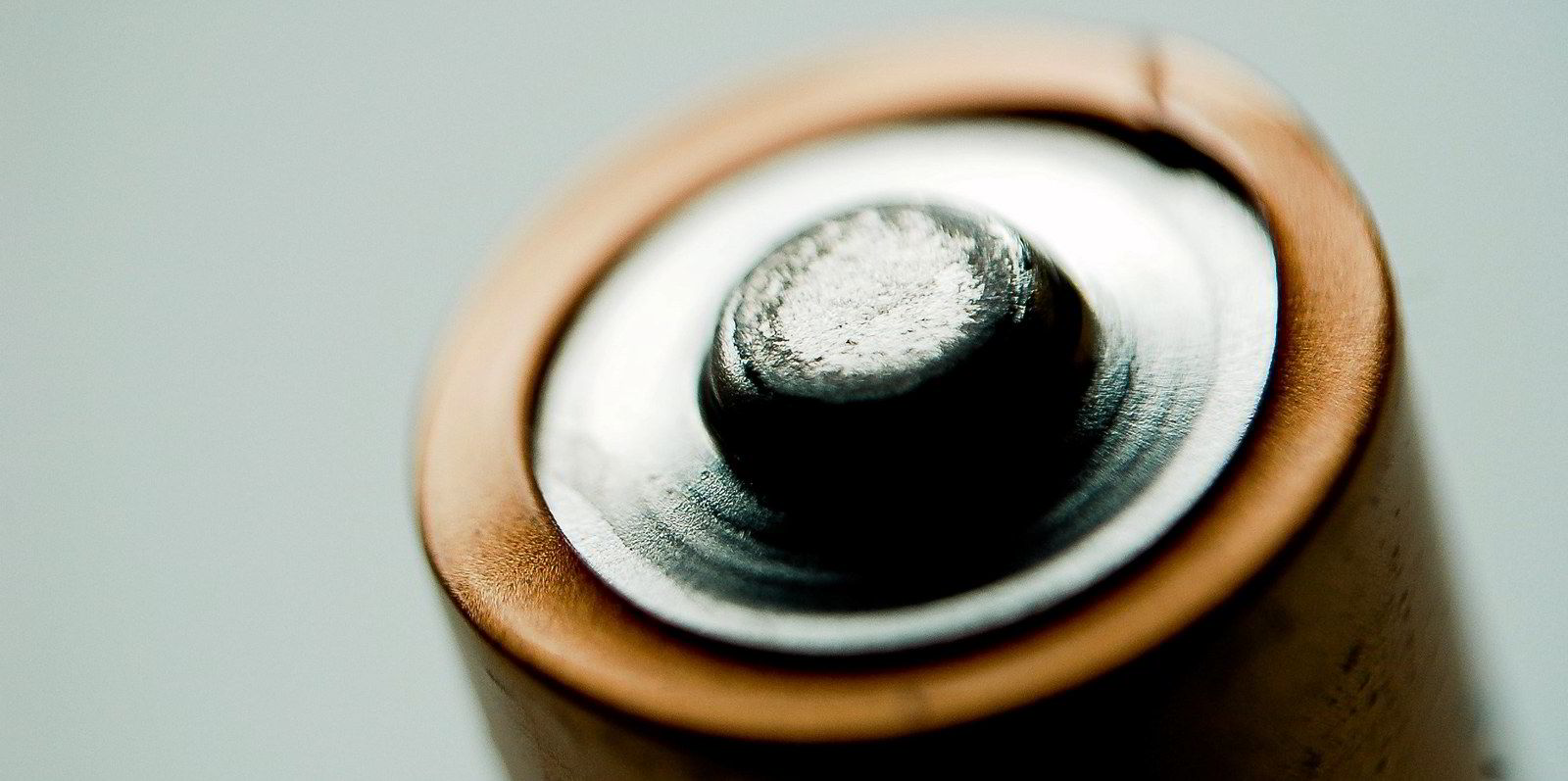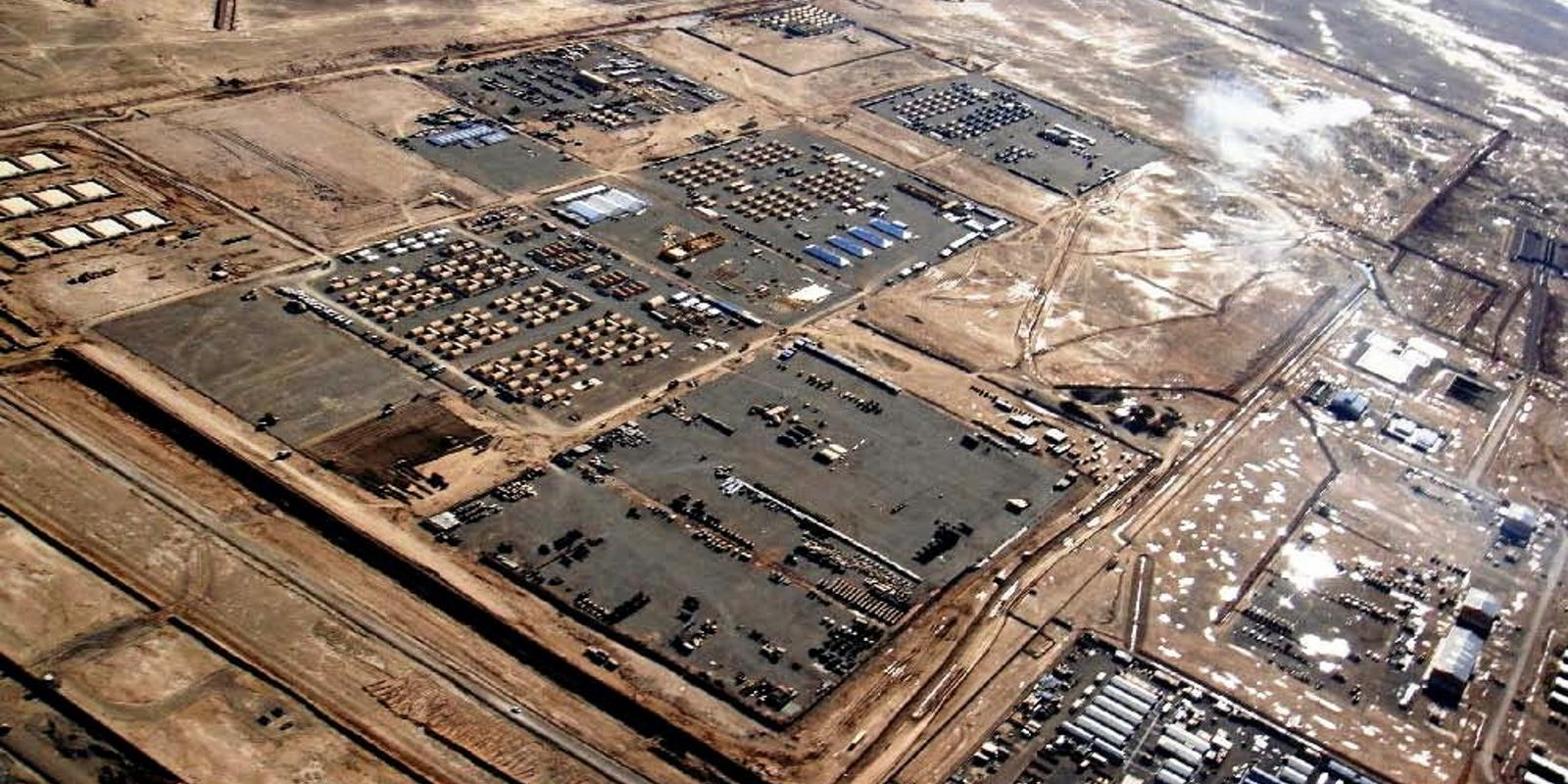Lithium-ion batteries are crucial in the energy storage sector but their backers are increasingly having to fight fears from the public – and attacks from developers of competitor technologies – over their potential fire risks.
Aside from pumped hydro storage, which is limited to mountainous regions, lithium-ion batteries currently dominate in the race to help store excess wind and solar energy for when the wind isn’t blowing and sun isn’t shining.
Fires and explosions don’t happen often. But the incidents that do occur have seriously blackened the image of a technology crucial in a world that wants to triple the amount of renewables globally by 2030.
A blaze at an Australian Tesla Megapack battery facility undergoing testing in 2021 took four days, 30 fire engines and 150 firefighters to bring under control. Last September, another Tesla battery in Australia nicknamed “Big Bessie” suffered a similar fate, although in that case a subsequent investigation identified a grid-side issue as the cause.
A few years earlier in the US, a lithium-ion battery system exploded, hospitalising four firefighters. A more recent spate of battery fires in New York prompted the launch of a task force into their safety.
The proliferation of giant battery arrays prompted one developer of lithium-ion energy storage systems to recently warn Recharge that the number of fires will increase “exponentially.”
Lithium-ion storage is now being pushed into increasingly urban settings, where the power is needed. But residents are increasingly pushing back, even likening the batteries to a “bomb waiting to go off”.
“Obviously the more systems that are out there the higher probability that additional incidents may occur,” said Chris Groves, a product manager at Finnish battery storage firm Wärtsilä Energy. “It’s not an if, it’s just a when.”
But he insists that, if you look at all the BESS systems out there, the rate of incidents is “miniscule.”
Ryan Franks, senior engineer at battery analytics software firm Twaice in Germany, agrees, arguing that linking the growth of lithium-ion energy storage with a growth in the frequency of fires is wrong. “The data just does not show that.”
The leading database that tracks battery fires and other incidents is compiled by the US non-profit Electric Power Research Institute (EPRI), which began collecting data after dozens of safety incidents in South Korea and the US in 2018 and 2019.
Lakshmi Srinivasan, senior technical leader in EPRI’s energy storage programme, said that while fires “do occur and get media attention,” the rate of these incidents is decreasing.
Their database has recorded around ten incidents annually for the last four years despite the massive rollout of battery systems.
The “caveat” to this is that the database can “only include incidents that are reported on.”
Srinivasan said this means it is “definitely possible” – and indeed it would seem almost certain – that others occur without making it into the public domain.
Better standards
What is certain is that there have been huge strides when it comes to making lithium-ion energy storage safer in recent years.
One key improvement is in the codes and standards employed in the manufacturing process, said Franks.
This has been coupled with a shift from everything being a “custom-made product” to having “much more emphasis on modular systems that are designed and produced in a repeatable consistent way in a factory environment.”
Further advances have been made in module construction, materials that you put between modules and diagnostic software, he said.
Groves said Wärtsilä has worked hard on ensuring that even if there is a fire it “remains inside of the cube” rather than setting off a “cascading” chain reaction that could send a whole system up in flames.
Improvements made to the safety of these systems may come at a cost, said Michael Burz, founder of US battery start-up Enzinc.
The risk of fires happening means “integrators have to devote more of each container’s space to temperature control, fire suppression and fire fighting systems.”
Developers must also space containers further apart to lower the risk of fires spreading, he said, lowering the energy density of lithium-ion battery systems – the quality that made them so popular in the first place.
“It makes sense for grid-scale storage to look at chemistries with no fire risk such as iron or zinc, lowering the risk of community pushback and leaving lithium for applications only it can meet, such as high-end automobiles.”
Enzinc, a champion of zinc-based batteries, is one of a host of start-ups that are trying to cut into lithium-ion’s dominant market share in energy storage.
Developers, including one launched recently featuring two veterans of Tesla – a company that knows a thing or two about lithium-ion batteries – routinely play on the safety fears around lithium-ion in marketing their own products.
However Stephanie Shaw, a technical executive at EPRI, said that she would be “very concerned about verifying” claims from energy storage developers that their technology is “inherently safe and has no risk”.
“You do have to beware,” she said, “that no matter what the design and how low of a hazard may exist in any given technology the best practice is always to use a multi-tiered approach to prevention and mitigation of those risks.”
'Let it burn'
“Proper prior consideration” is key to fighting lithium-ion battery fires, said Franks. Because the problem is once one starts, you “can’t really put it out.”
This is because the lithium salts in the battery are self-oxidizing, which means they can't be “starved out” like normal fires.
“It is hazardous energetic material,” he said. “What you’ve got to do is get the energy out of the system.”
The industry has increasingly shifted to a “let it burn” approach, with more focus on containing the fire and making sure it doesn’t spread.
Firefighters do get “rightly very concerned” about this, said Franks, because they “want to take action".
The approach could also be an unpopular one in densely populated areas, not least due to the risks posed by toxic smoke that the batteries can emit.
Fortunately, Franks said that the thinking around prior consideration – identifying what resources your local fire department has, access to water, and so on – has advanced tremendously in the last couple of years.”
E-scooters not helping
Another issue when it comes to public perception of lithium-ion batteries is that the safety of large-scale energy storage systems is linked to issues with consumer electronics.
E-scooters, for example, are being banned on public transport around the world due to their habit of bursting into flames.
“The vast majority of fires and incidents you hear about are consumer products,” said Franks.
Consumers also sometimes misuse products, he said, taking them for unauthorised repairs, knocking them around or using the wrong charger.
The batteries in electric vehicles are more reliable but given they spend a lot of time travelling at high speed there is an “inherent extra aspect to consider of something striking it,” said Franks.
“You can run a forklift into an energy storage system,” he added, but it’s not as likely.
John Busbee, CEO of US battery developer Xerion, says another issue is that lithium-ion gets held to a higher standard than alternatives.
“When you put a massive amount of reactive material in a very small space there is always always going to be an inherent fire risk,” he said. But people “never report cars that catch on fire from gasoline and they always report the electric fires.”
Concern around lithium-ion batteries is “overblown,” he said, “but I also think it’s never going away.”
